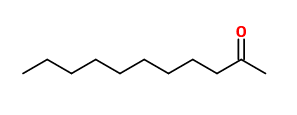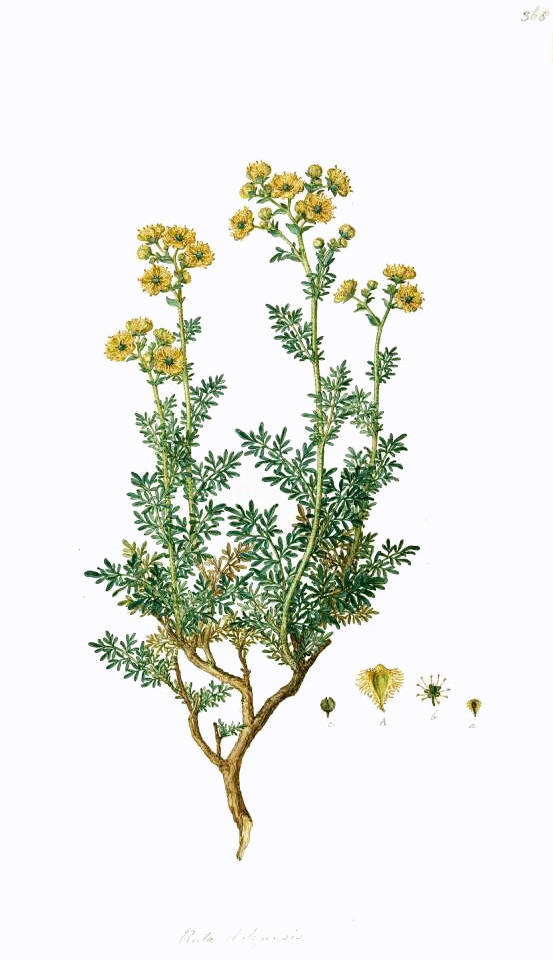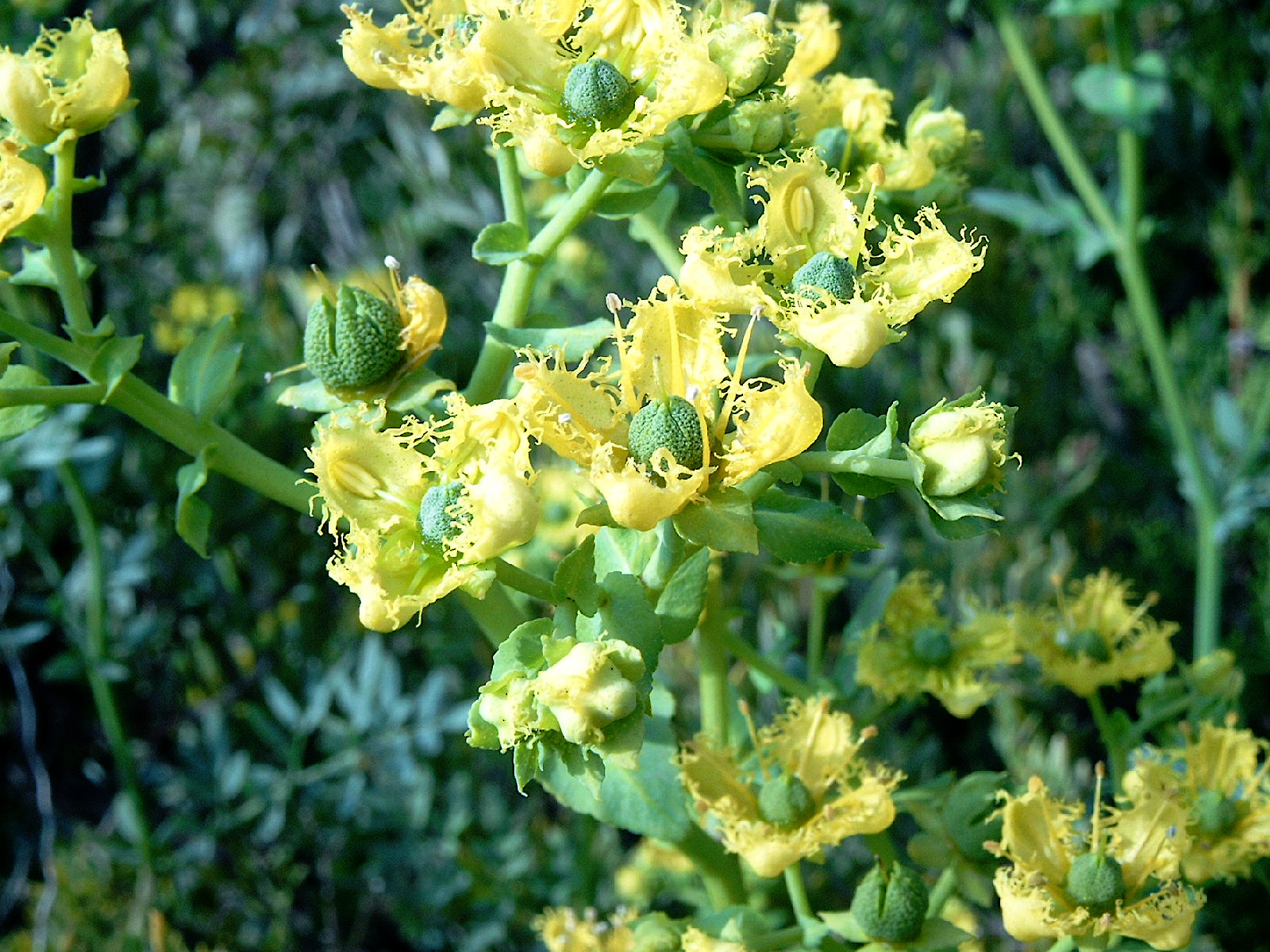Ruta chalepensis L. - Rutaceae - fringed rue, Egyptian rue, Gefranste Raute
Evergreen subshrub, 20-80cm high, native to the Mediterranian region and Northwest Africa; yellow petals with rolled, fringed edges.
„Steam distilled essential oil from aerial parts of Ruta chalepensis growing in Turkey was analyzed by GC and GC/MS. Twenty four compounds were identified representing 93.4% of the oil with 2-undecanone (66.49%) and 2-nonanone (16.24%) as major constituents.“
[Constituents of the essential oil of Ruta chalepensis L. from Turkey. Baser, K. H. C., Özek, T., Beis, S. H. , Journal of Essential Oil Research, Vol.8(4), 1996, 413-414]
 2-undecanone (waxy fruity) |  1-methoxyhexane-3-thiol (sulfurous green) |  4-methyl-3-sulfanylhexan-1-ol (green rhubarb sulfurous) |
The exceedingly powerful thiol 1-methoxyhexane-3-thiol (herbaceous, pungent, repulsive; found in Salvia sclarea) was suspected to be part of the volatiles of a Ruta species where it was subsequently identified together with its homologue, 1-methoxyheptane-3-thiol, 1-methoxy-4-methylpentane-3-thiol, and 4-methoxy-2-methylbutane-2-thiol.
[1‐Methoxyhexane‐3‐thiol, a Powerful Odorant of Clary Sage (Salvia sclarea L.). van de Waal, M., Niclass, Y., Snowden, R. L., Bernardinelli, G., Escher, S., Helvetica chimica acta, Vol.85(5), 2002, 1246-1260]
A solvent extract of sulfurous-sweaty smelling Ruta chalepensis contained 21 related organic sulfur-containing compounds, from which 19 were confirmed by comparison of their analytical data with those of authentic reference samples. These compounds belong to a family of natural flavor molecules having a 1,3-positioned O,S moiety in common like 4-methoxy-2-methylbutane-2-thiol (main sulfur containing component), 1-methoxyhexane-3-thiol (known from Salvia sclarea) and 4-methyl-3-sulfanylhexan-1-ol e.g. The natural isomers of 4-methyl-3-sulfanylhexan-1-ol consisted of a 65:35 mixture of the (3R,4S)-isomer (onion, garlic, perspiration) and the (3S,4S)-isomer (weaker, not much character). The unnatural isomer (3R,4R) was described as „rhubarb, green, and very natural grapefruit“ by a chirospecific GC-sniffing experiment.
[Escher, Sina, et al. „Combinatorial Synthesis by Nature: Volatile Organic Sulfur‐Containing Constituents of Ruta chalepensis L.“ Chemistry & biodiversity 3.9 (2006): 943-957]
„The essential oils of the dried aerial parts of Ruta chalepensis collected from the north of Tunisia were recovered by hydro-distillation with approximately 5.51% yield on a dry weight basis. The effects of drying and hydro-distillation duration on the chemical composition of the essential oils were studied. The obtained essential oils of the different parts of the herb were analyzed by GC–MS and 13 major compounds were identified. The main ones are 2-undecanone (77.18%), 2-decanone (8.96%) and 2-dodecanone (2.37%). 2-Undecanone was shown to be the unique component (100%) of the essential oil obtained from R. chalepensis flowers. Pulegone was identified only in the essential oil of the stems (about 32.11%) and camphor was identified exclusively in the essential oil of leaves (2.46%).“
[Chemical composition of the essential oil of Ruta chalepensis L.: Influence of drying, hydro-distillation duration and plant parts. Mejri, J., Abderrabba, M., & Mejri, M., Industrial Crops and Products, Vol.32(3), 2010, 671-673]

Sibthrop,J., Smith,J.E., Flora Graeca (drawings), vol.4, t.68 (1823)
http://plantgenera.org/species.php?id_species=895694

Ruta chalepensis, Portugal, (2004), Author: Carsten Niehaus
CC BY-SA 3.0 Wikimedia Commons